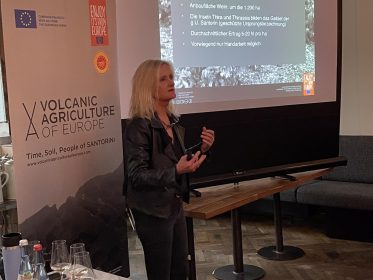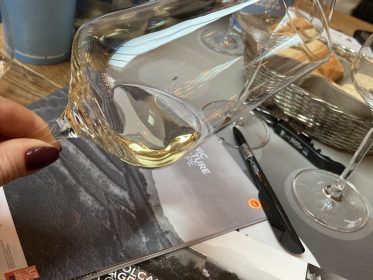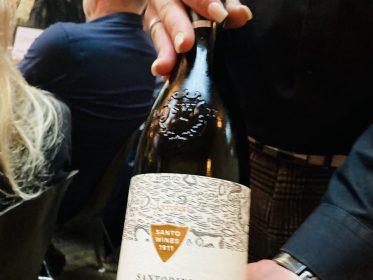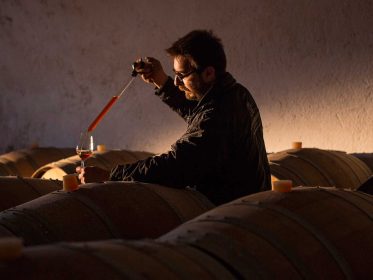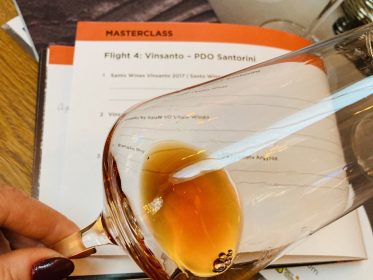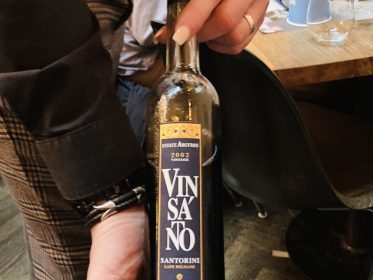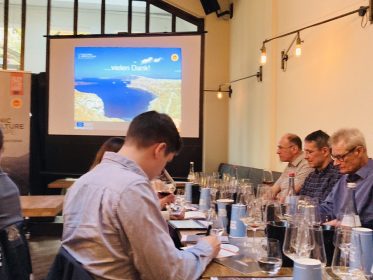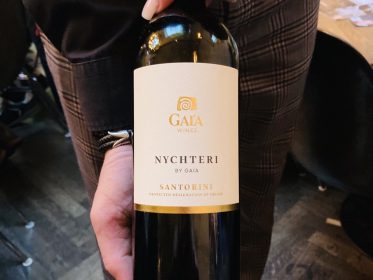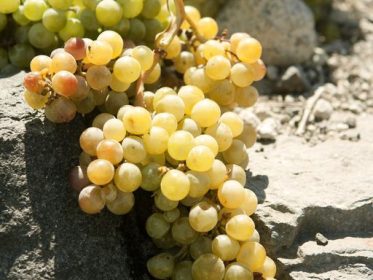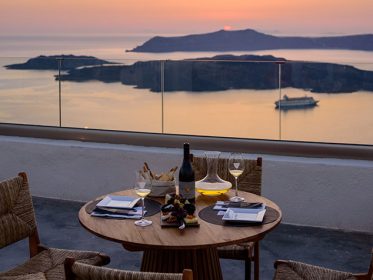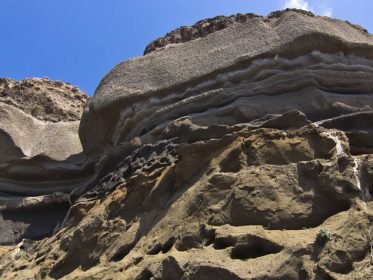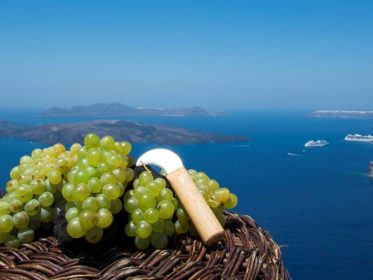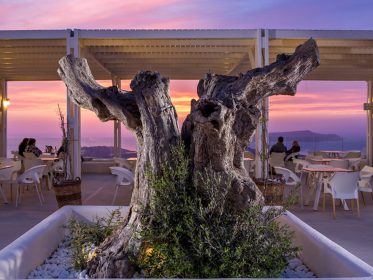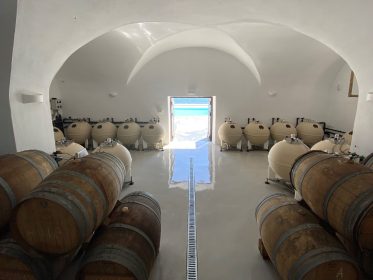Time, Soil, People of Santorini: discovering the wines of the mystical island
Author: Victoria Makarova
“I don’t remember exactly when I felt an irresistible desire to go to the Greek island of Santorini, but it was apparently a long time ago. My incredible craving for Santorini was not based on anything visual, but, rather, on that bewitching, siren-like call that was addressed to my consciousness and the subconscious, on something connected with the Mystery”. This is a quote from a story called “Breakfast at ‘Tsitouras’”, written by a Serbian writer Yasmina Mikhailovych. And, probably, there’s no other quote that would give a better description of the island’s mystical, mesmerizing charm.
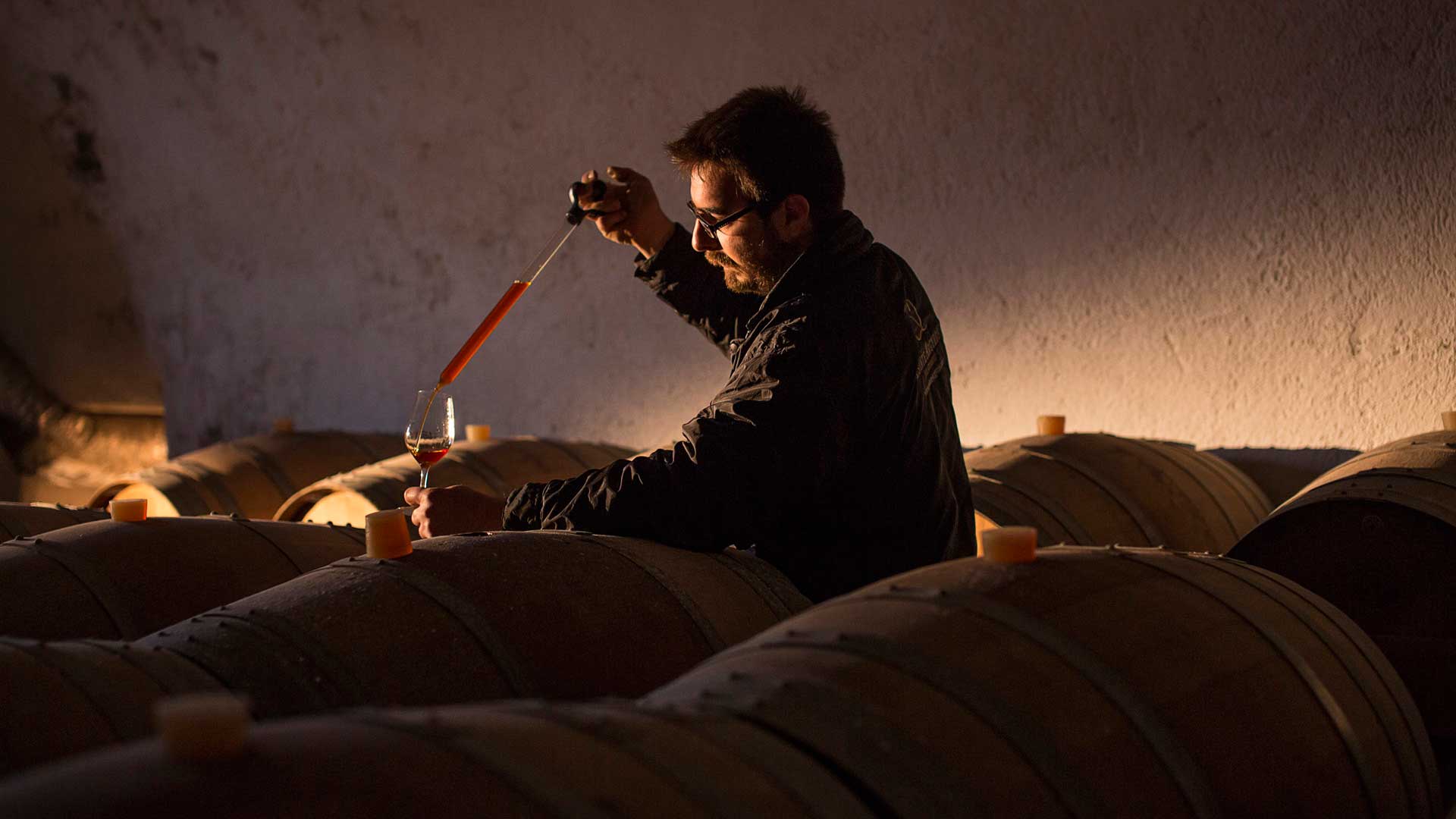
Santorini is one of the most famous tourist spots in the world. Every year the 15,550 residents of Santorini welcome, on average, 5 min tourists. “Tourism is our friend and our enemy at the same time,” says Matthaios Argyros, the owner of Estate Argyros winery, representing the fourth generation of Santorini’s vine growers and winemakers. And, yes — local wines are one of the island’s real treasures, that have been recently presented by Caro Maurer, a German Master of Wine, in a series of Time, Soil, People of Santorini master-classes and commented tastings initiated by Volcanic Agriculture of Europe and held by Organize Communications agency.
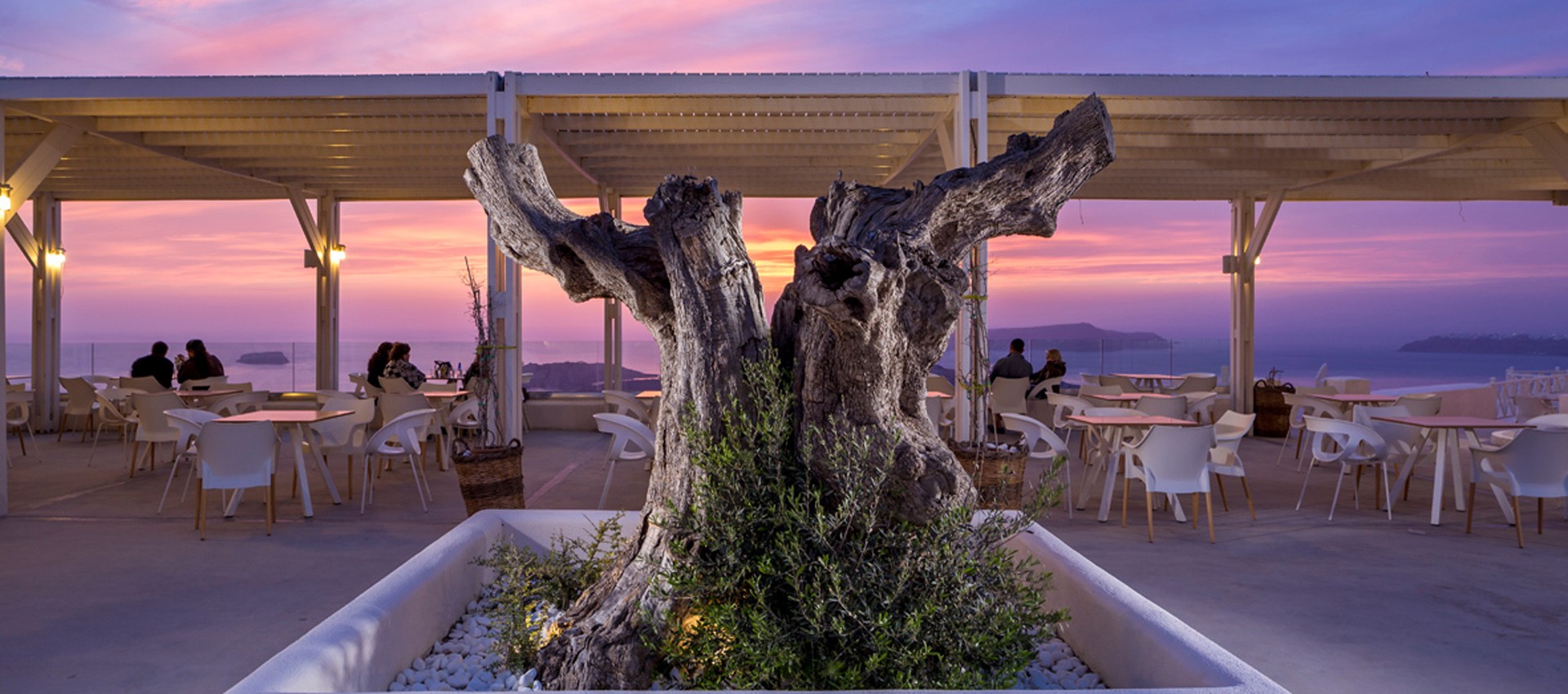
Here are a few interesting facts about the island and its wines.
- Santorini, a volcanic island in the Aegean sea, belongs to the Cyclades archipelago, and is, in fact, sitting on a rib of a huge crater.
- The caldera, a basin which was formed during one of the early eruptions, is around 11 km long, 7 km wide, and 83 square kilometers in size.
- There are two inhabited islands in the area — Santorini (formerly named Thira) and Thirassia, as well a tiny, deserted isle of Aspronissi. In the middle of the basin there are two small uninhabited islands — Kaméni.
The island is one of the most surreal viticultural environments in the world. Apart from the active volcano which had its first eruptions some 650,000 years ago, it boasts extremely young and infertile soils, with almost zero potassium and less than 8% clay content (this last characteristic makes Santorini immune to Phylloxera). The gray-brown-beige layered walls of the crater rise up to 300 meters almost vertically from the water. The soil consists of volcanic ash (this layer is up to 60m thick), pumice and basalt (called “aspa”). The soil characteristics explain the Santorini vineyards’ dramatically low yields, while the absence of phylloxera allows vines to thrive for an extremely long time, sometimes for hundreds of years, and always on their varietal roots.
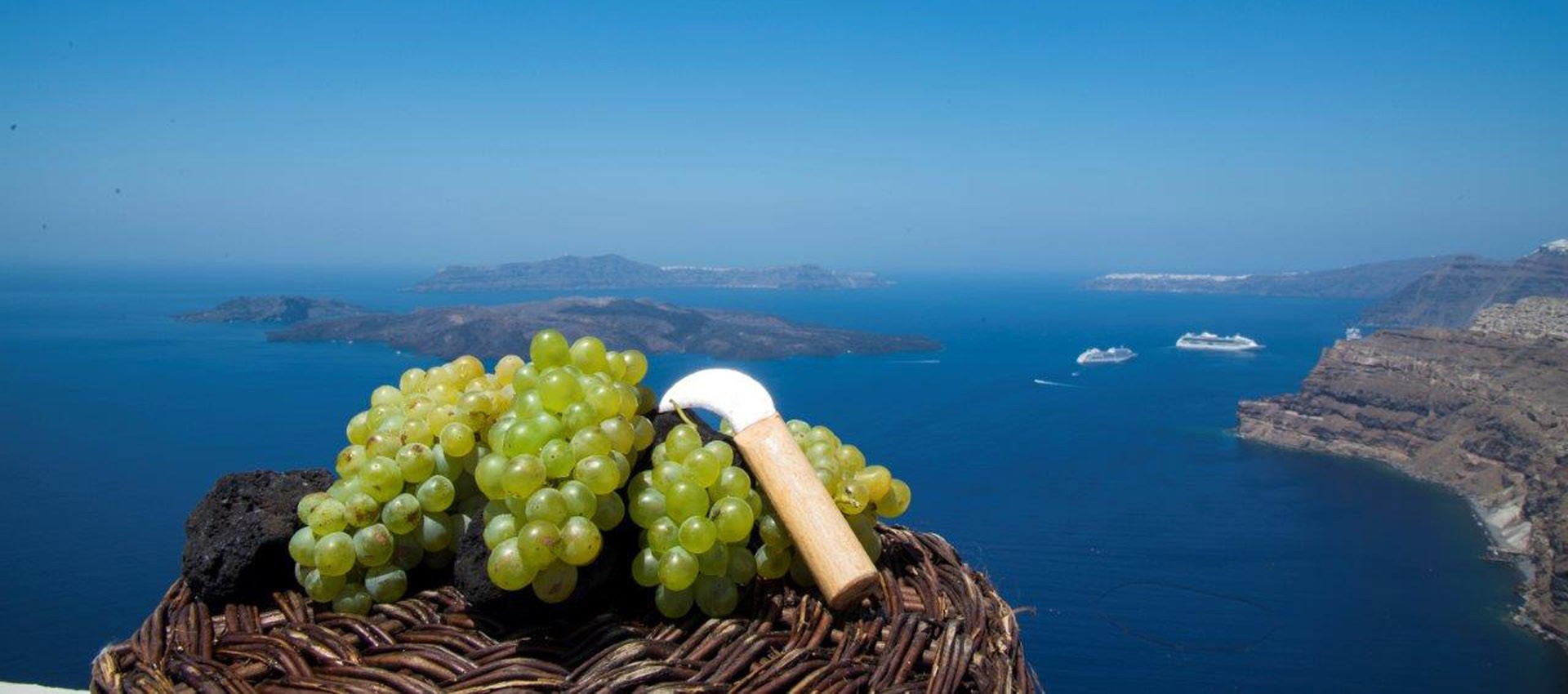
The climate of the island is extremely windy and dry, with the rainfall of 313 mm per year (and there have already been vintages with only 100 mm!). Average summer temperature is 29 C, with the peak temperatures over 30 C. Without the mist coming out of the caldera every morning, very little vegetation could survive in Santorini.
The winemaking of Santorini is developing rapidly. At present, there are 20 wineries on the island (30 years ago there were only six).
The vines of Santorini are probably the oldest in the world, some other them being up to 500 years old. The viticulture area covers, in total, around 1,200 ha. The islands of Thira and Thirassia form the Santorini PDO area. The vineyards spread across the entire island. Due to a peculiar landscape, only manual viticulture and harvesting are possible there.
Assyrtiko is a #1 indigenous white variety for Santorini, and one of the most famous Greek varieties, out of the country’s 300 autochtones. It covers around 85% of the island’s cultivated area (approx. 1100 ha): around 40% of the entire Greek Assyrtiko plantations grow on Santorini. Assyrtiko wines demonstrate excellent structure and very specific varietal organoleptic features. Typical nose includes white flowers, lemon, lime, passionfruit, flint. On the palate they are characterized by the pronounced taste of salt, wet stone, oyster shell, and green herbs. The wines made of this variety have a tendency for being reductive when young. Assyrtiko wines also deliver a unique combination of high alcohol content (up to 15.5% vol) and high acidity.

Wine styles with Assyrtiko vary by their classification.
PDO Santorini includes:
- dry white unaged wines;
- Nykteri wines (from the Greek nycta — “night”, traditional Santorini processing method: collection during the day, processing at night; these wines are usually aged in oak for at least 3 months);
- Vinsanto.
Other whites and reds go under PGI Cyclades.
So, a few words about the commented tasting guided by Caro Maurer. All of the 13 samples were white wines, mostly of the Assyrtiko variety, sometimes in blends with other Santorini autochthons (Atiri, Aidani).
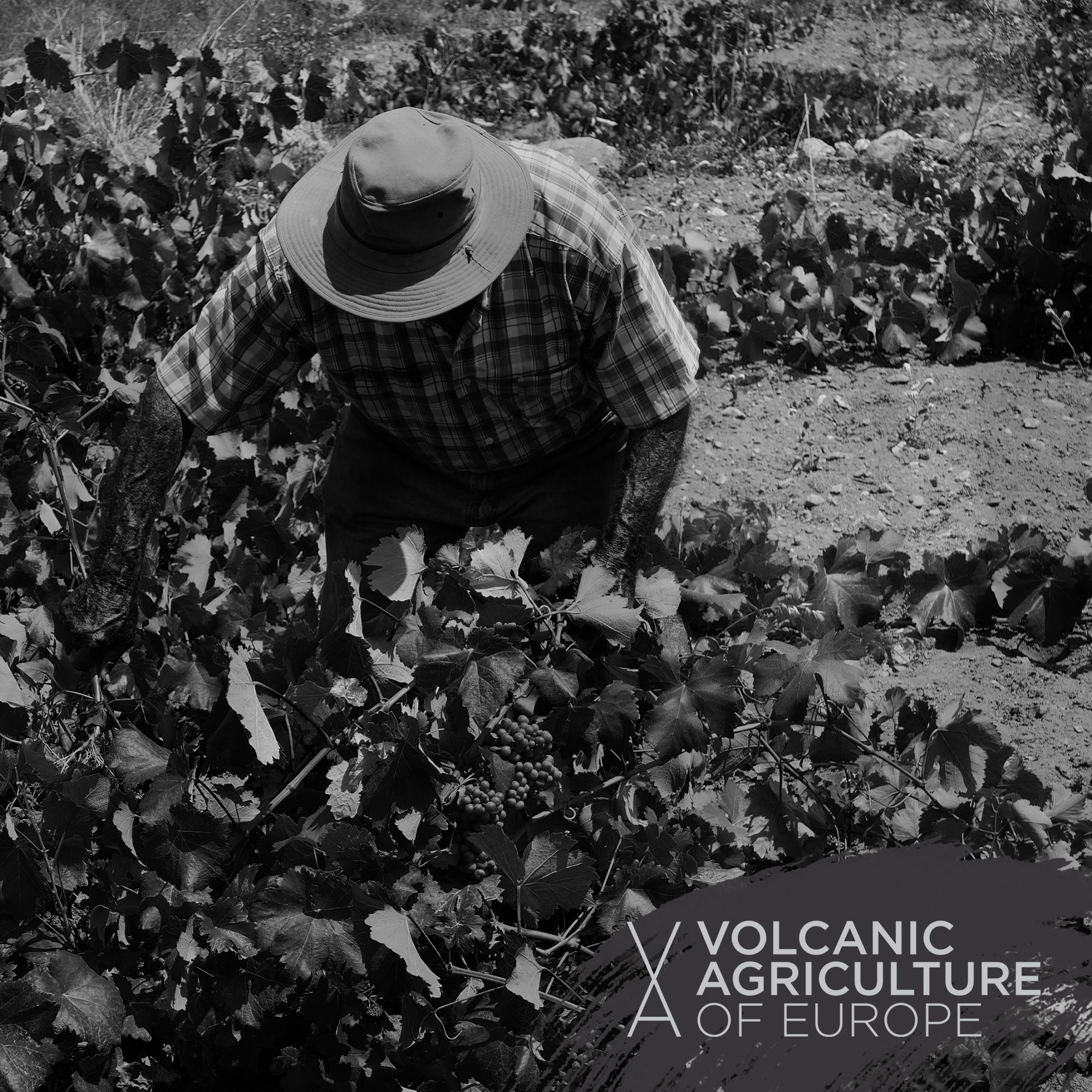
The tasting consisted of 4 flights:
- fresh unaged wines;
- single vineyards’ wines;
- Nykteri wines;
- Vinsanto wines.
A few details about my favourites from each flight:
Santo Wines Santorini 2022 (Santo Wines) — dry white, Assyrtiko 100%.
- Nose: white flowers, green citrus, exotic fruits, lemongrass, with some gentle honey notes.
- Palate: medium body, medium+ acidity.
- Finish: salty and finish. Very fresh, pleasant and balanced.
Santo Wines Kontarades 2020 (single vineyard) — dry white, Assyrtiko 100%, skin contact for 6 hours, aging in steel.
- Nose: white and yellow flowers, buckwheat honey, green herbs, fresh citrus, golden apple.
- Palate: medium+ body, the acidity is pronounced and very well balanced.
- Finish: pleasant, long-lasting, mineral.
Nycteri by Gaia 2020 (Gaia Wines) — dry white, Assyrtiko 100%, fermentation in new French oak, aging partly in oak from Nevers (France), partly in French acacia.
- Nose: white acacia flowers, ripe yellow apples, notes vanilla and oak.
- Palate: the taste is full-bodied, with a balanced acidity.
- Finish: pleasant and creamy.
Estate Argyros Vinsanto Late Release 2002 (Estate Argyros Winery) — naturally sweet white wine, an amazing blend of Assyrtiko (80%), Atiri and Aidani grapes, which ripened at an altitude of 500 m above sea level. This wine demonstrates a remarkable color of dark caramel with honey.
- Nose: dried figs, hazel, dried herbs and flowers, candied fruit, raisins, creamy caramel.
- Palate: rich, complex, excellent balance of acidity and sweetness. Alcohol 13.5% — completely imperceptible.
- Finish: elegant and lengthy, with a hint on minerality.
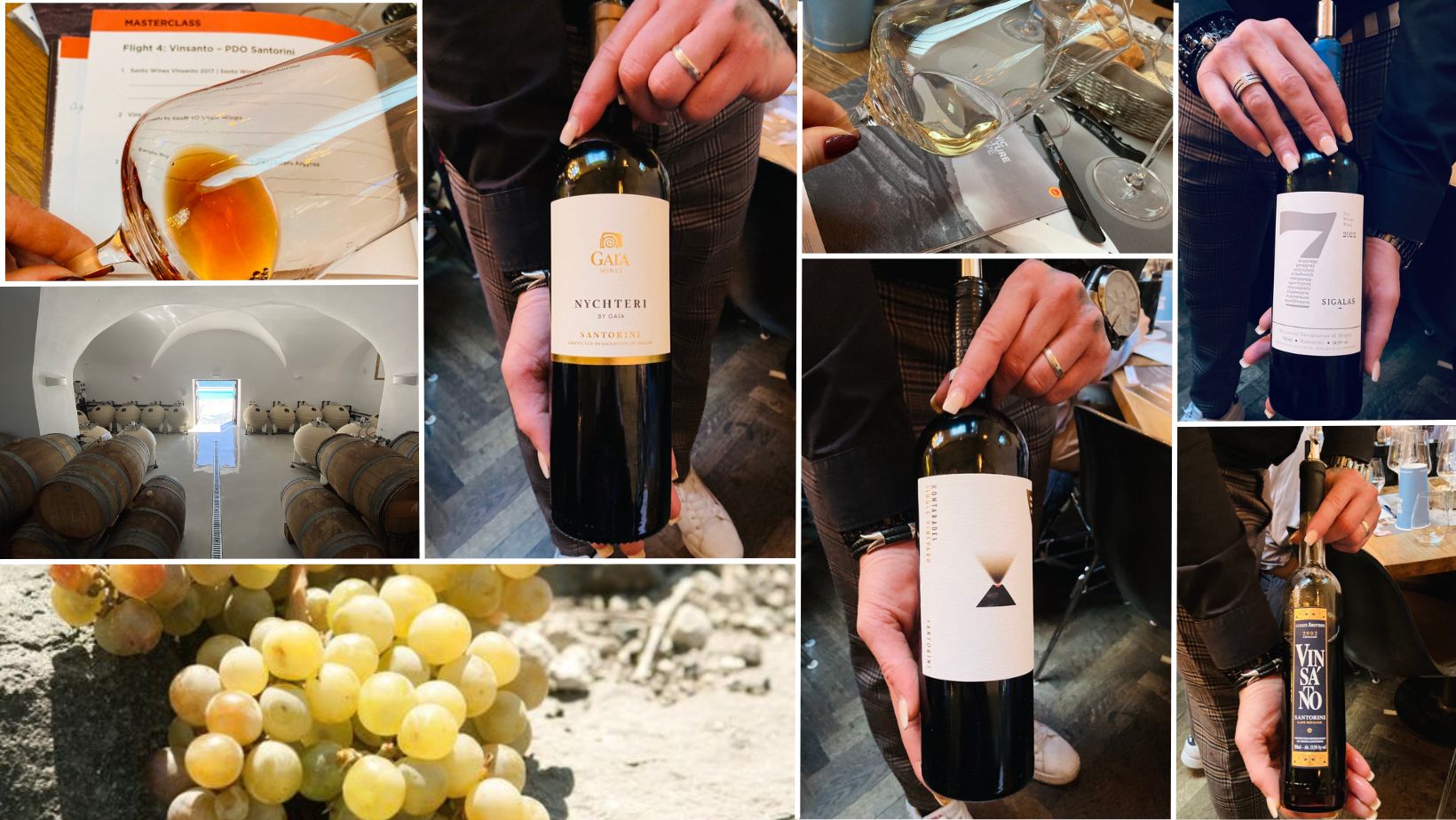
No travel to a winemaking region is good enough without experiencing its wine culture. When planning a trip to Santorini, one should definitely include visits to the island‘s best wineries and tasting of the amazing wines in the program. For those who choose to dig deeper, there‘s also Koutsogiannopoulos Wine Museum which has everything a visitor would want to know about winemaking in one of the most unique spots on earth. The museum is located in an ancient labyrinth of natural caves, 8 meters below the ground and 300 meters long. Enjoy the dive into the ancient history and fine flavours of the Santorini Wines!
Photo credit: Organize Communications, Estate Argyros Winery, Santo Wines, Gaia Wines, Volcanic Agriculture of Europe, Victoria Makarova.
